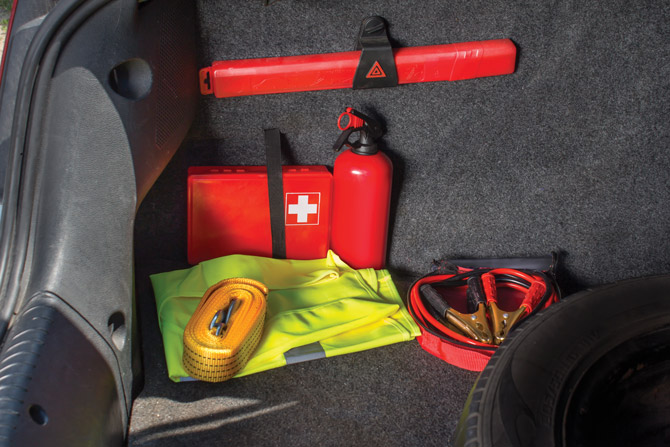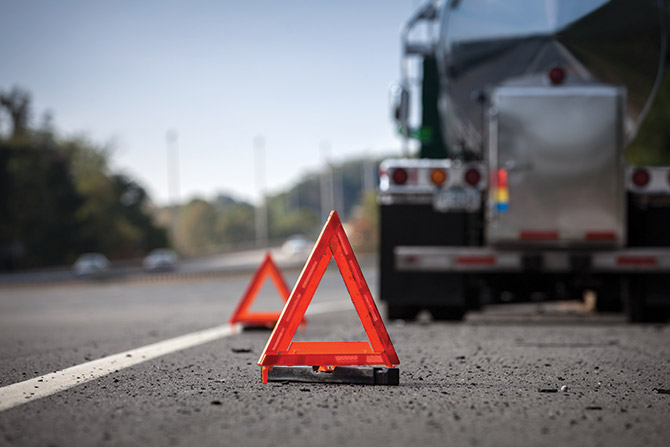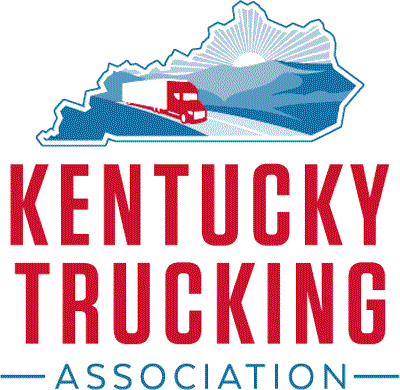By Kentucky Trucking Association
Business owners generally have important questions to answer:
What makes my comp-
any profitable?
What are my biggest expenses?
How can I increase my profits and reduce my expenses?
Is it a waste of money to have a safety program? The answer to that question is a strong “no.” Why? Injuries are expensive even when they aren’t fatal, and if you can prevent them, you have automatically reduced your expenses. That is why the best way to think about the cost of a safety program is to view it as a source of reliable hidden profits.
The U.S. depends on trucks for its transportation needs, but people outside the industry often don’t realize the risks faced by drivers. In fact, if trucking companies don’t focus on safety programs, injuries from accidents can easily become their biggest expense. The question shouldn’t be whether your trucking company can afford a safety program. It might take time to set up, and it won’t be perfect, but money spent on a safety program is probably going to be much less than money spent after an accident occurs. More, a good safety program should prevent people from being killed or injured. You can’t put a price on that.
Some of the expense caused by trucking accidents is direct and easy to see. It consists of the cost for an ambulance, the cost of medical care that often takes place in emergency rooms, and pharmacy expenses.
Indirect expenses, although less visible, are bigger than the direct costs and go on for much longer than you might expect. They include, but are not limited to, the following issues:
- The time that could have been spent on business is spent dealing with accidents instead.
- A driver who is killed or injured has to be replaced.
- Time has to be spent on issues related to the accident. Some of this time is administrative, but you also have to include time spent training new hires or working overtime because you don’t have as many employees available anymore to do the work.
- OSHA fines are possible.
- More accidents mean higher insurance rates and higher workers’ compensation rates.
- There are incident investigation costs.
- The company may have to pay attorneys.
- Revenue is lost, and replacing it costs more than the amount lost.
According to the National Safety Council’s Injury Facts website, estimated work injury costs in 2017 totaled $161.5 billion.
- The amount per worker was $1,100. This amount is the offset cost — that is, the value of goods or services that has to be produced to offset the cost of work injuries. It isn’t the average cost of the work-related injury itself.
- The amount per death was $1,150,000.
- The amount per injury involving medical professionals was $39,000.
What’s the breakdown for the $161.5 billion?
- Administrative expenses ($52.0 billion).
- Wage and productivity losses ($50.7 billion).
- Medical expenses ($34.3 billion).
- Employers’ uninsured costs, such as the value of time lost by other employees and the cost of investigations and reports ($12.4 billion).
- Losses caused by fire ($7.3 billion).
- Automobile damage ($4.9 billion).
On the same website page, the page includes a graphic showing time lost due to work-related injuries. The total number of days lost in 2017 was 104 million. Seventy million of those days were for injuries that took place in 2017. The remaining 34 million days were caused by injuries that took place before 2017. The estimated number of days that would be lost after 2017 was 55 million. The estimates don’t include people who were injured but not disabled, and it also doesn’t include additional people who were directly or indirectly involved in the accidents.
According to records from the Bureau of Labor Statistics for 2012, Kentucky had higher injury, illness, and fatality rates than the rest of the U.S. The injury or illness rate per 100,000 workers in Kentucky was 4.1. The national rate was 3.4. For fatalities, the national fatality rate per 100,000 workers was 3.5. In contrast, the Kentucky Fatality Assessment and Control Evaluation reported a rate of 4.6. The same organization broke down the fatalities by type of incident, and the category with the largest number of fatalities (28) was motor vehicle crashes; the next two highest categories, with nine fatalities each, were caused by suicide and falls. The three most dangerous occupations in Kentucky, measured by work-related fatalities, were transportation and material moving (25), management, including farming (18), and construction and extraction (14).
That’s why the Kentucky Trucking Association has decided safety programs are so important in Kentucky.
The cost of an accident, and its impact on a company, has a direct effect on the company’s profit margin. Profit margins generally are between 1-5%. The higher the margin, the lower the replacement revenue. For example, suppose the yearly injury costs $1,000. If the profit margin is 1%, it would take $100,000 to cover that $1,000 loss. If the profit margin is 5%, that number drops to a still-expensive $20,000. Keep in mind this is money that has to be earned in addition to the regular revenue a company makes.
How can a company pay for an injury? The company can find ways to lower workers’ compensation insurance or to increase profits, especially by decreasing expenses. If the company still cannot afford to pay for an injury, then it is likely that the money will have to come out of the owner’s pockets instead. It may take many years for the owner to be able to finish paying for these inevitable and unavoidable costs. It

The best way, however, is to develop a safety program that will prevent injuries from occurring in the first place. Preventing injuries is especially important because the data shows that companies with frequent injuries often have more severe injuries, too.
How do you lower the cost of workers’ compensation insurance? The National Council on Compensation Insurance has 600 classifications. Insurance companies come up with experience rates for each classification that are organized by state, and they base the experience rates on the last five years of experience. The premium a company pays has three parts:
- The base rate. This rate is the insurance company rate based on the NCCI loss cost and the insurance carrier’s cost.
- The manual rate. This rate is the business classification multiplied by the number of people on the company payroll, which is then divided by $100. It pays to make sure your business is classified correctly.
- The experience rate is the one that can be affected by a company safety program. To calculate it, you have to determine the company’s losses over three years, excluding the previous year. For example, the 2020 rate would be based on losses from 2016-2018. Losses are compared to average injury risk within a company’s classification and the actual number of incidents. If a company reduces the number of incidents, then the experience rate goes down. Fewer injuries result in more profit because expenses (as affected by the experience rate) have gone down.
The experience rate for a new company is always 1. After the first year, it can go up or down, but the goal is for it to go down. Suppose a company has an experience rate of 0.85. The rate would modify the premium, so if the manual premium were $100,000, the modified rate would be $85,000. Now consider a company that is identical to the first company but has an experience rate of 1.15 because it hasn’t invested in safety within the company. Its manual premium would be $100,000, but when multiplied by 1.15, the modified rate would be $115,000.
For any company, safety is a shared responsibility for the employer and also for the employee. Creating a safety program, with clear goals for preventing accidents, is a way to help employees stay safe. A side benefit, of course, is that a good safety program will also make it clear to employees that they are valued. The side benefit for employers is that safety programs are a smart business decision as well as being the ethical choice.
You should also know that turnover goes down 48% for companies that implement an injury prevention program. Why? Workers are more relaxed when they are in a positive work environment, and they are also less likely to make mistakes. Not only do they make fewer mistakes, but those mistakes are also less costly. Employees are more productive and efficient; in fact, productivity can increase as much as 25%. Companies with safety programs have reported that for every dollar they’ve spent on the program, they’ve gotten a return of $3-$5.
Your safety program should include the following:
- An emergency response plan.
- A plan for dealing with bloodborne pathogens such as hepatitis B, hepatitis C and HIV.
- Safety training.
- Safety training and safety equipment.
- Training documentation.
- Fall protection.
- Trench safety.
For more information to get you started on creating a safety program for your company, call our offices at the KTA. We have resources available to help you.
This story appears in the 2020 Issue 2 Kentucky Trucker Magazine.








